Main menu
Common skin conditions

NEWS
Join DermNet PRO
Read more
Quick links
Author: Dr Amanda Oakley, Dermatologist, Hamilton, New Zealand, 1997. Updated by Dr Anthony Yung, Dermatologist, Hamilton, New Zealand; Chief Editor: Dr Amanda Oakley, March 2014.
Introduction
In children
In adults
Precautions
Investigations
Treatment
Maculopapular cutaneous mastocytosis, also called urticaria pigmentosa, is due to abnormal collections of mast cells in the skin causing brown patches and freckles. It is the most common type of cutaneous mastocytosis.
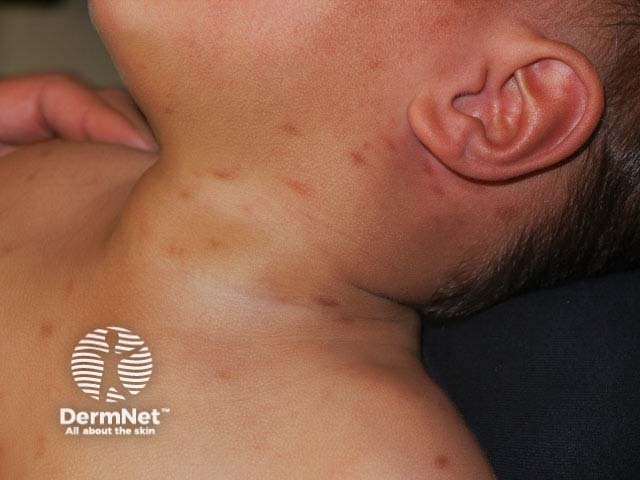
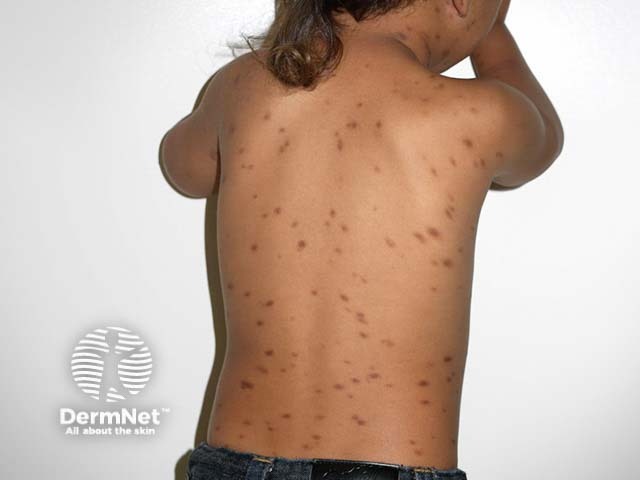
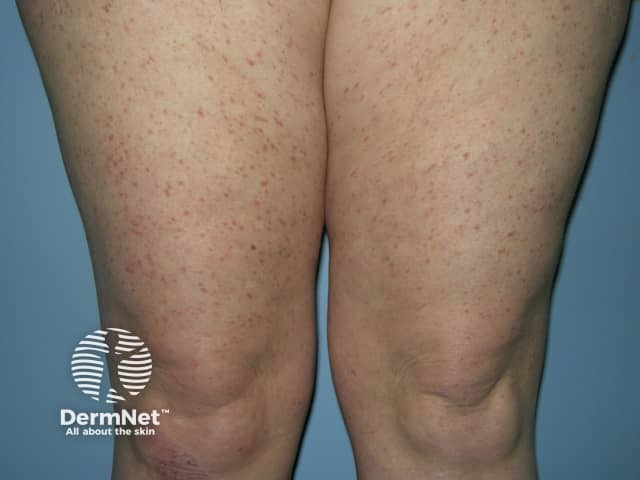
Urticaria pigmentosa: brown spots that urticate
Maculopapular cutaneous mastocytosis most often affects infants, with the first patches appearing at a few months of age. They patches are often confused with moles or with insect bites at first, but the lesions persist and gradually increase in number for several months or years. They can appear on any part of the body including the scalp, face, trunk and limbs.
In young children, it is common for the mastocytosis patches to blister when rubbed. If many patches are rubbed or activate spontaneously at the same time, the infant may become irritable, but is uncommon for severe symptoms to arise.
Over time, the mastocytosis becomes less itchy and eventually the patches fade away. By the teenage years, most patches will have gone.
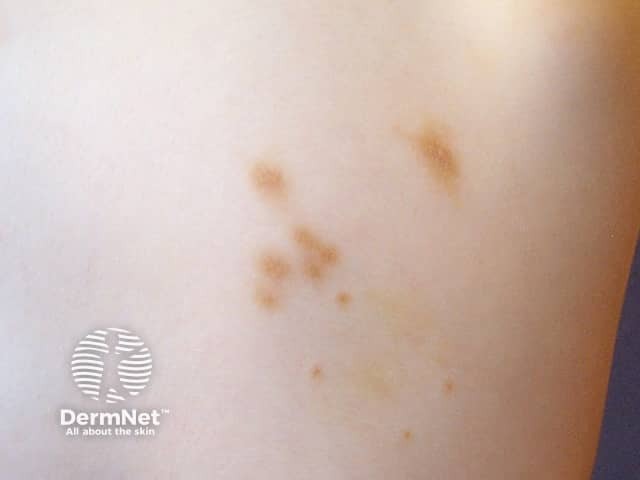
Urticaria pigmentosa in a child
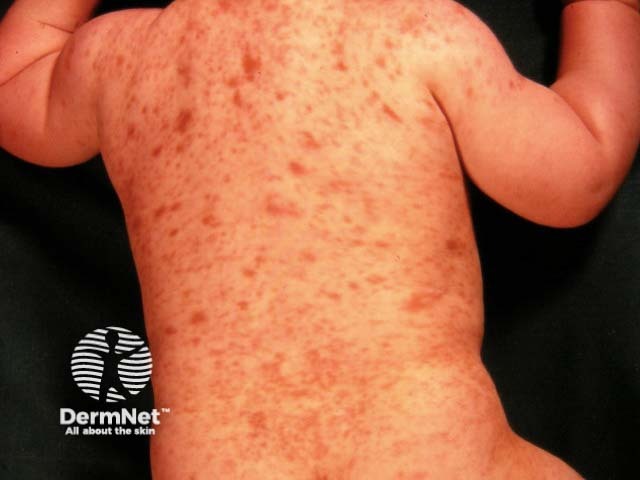
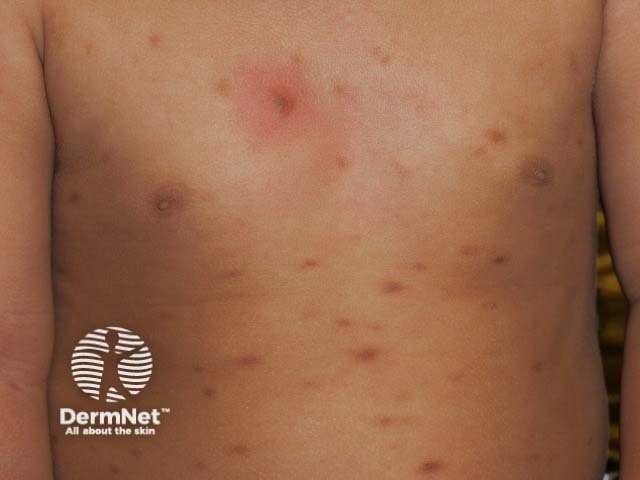
Cutaneous mastocytosis in an infant - yellow-brown macules over the chest and back. The chest lesion has urticated 5 minutes after rubbing (Darier sign)
Maculopapular cutaneous mastocytosis can sometimes develop for the first time in an adult. Just a few lesions may appear, or many. The lesions can be unsightly and itchy. Unfortunately, in adults, urticaria pigmentosa tends to persist long-term. Sometimes patients can have systemic symptoms (such as flushing, itching, low blood pressure, anaphylactic shock, diarrhoea and bleeding from the gastrointestinal tract), which suggest the presence of systemic mastocytosis.
Localised cutaneous mastocytosis has rarely been reported to arise in an area of radiation treatment for breast cancer for unknown reasons.

Maculopapular cutaneous mastocytosis (urticaria pigmentosa); red-brown maculopapular lesions on the leg

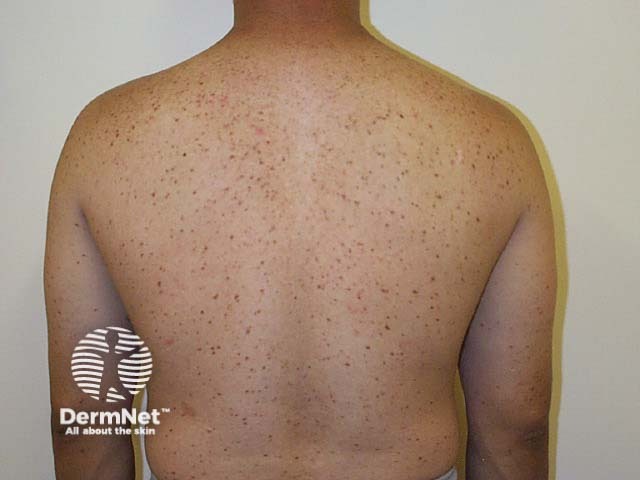
Exercise or heat can aggravate symptoms of cutaneous mastocytosis. A severe reaction can result in flushing and faintness.
Certain medications can cause mast cell degranulation and should be avoided if there is extensive urticaria pigmentosa. These include:
People with urticaria pigmentosa may get a severe allergic reaction from bee or wasp stings, hence they may need to carry an injectable adrenaline (epinephrine) kit.
The appearance of maculopapular cutaneous mastocytosis is generally so characteristic that no specific tests are necessary. However, occasionally a skin biopsy is needed to confirm the diagnosis (see maculopapular cutaneous mastocytosis pathology). If there are any symptoms suggesting internal involvement (systemic mastocytosis), refer to our page on mastocytosis for further information. Tests may include:
Maculopapular cutaneous mastocytosis is not serious, and does not require any treatment in most cases (unless there is also systemic involvement). The following can be helpful.